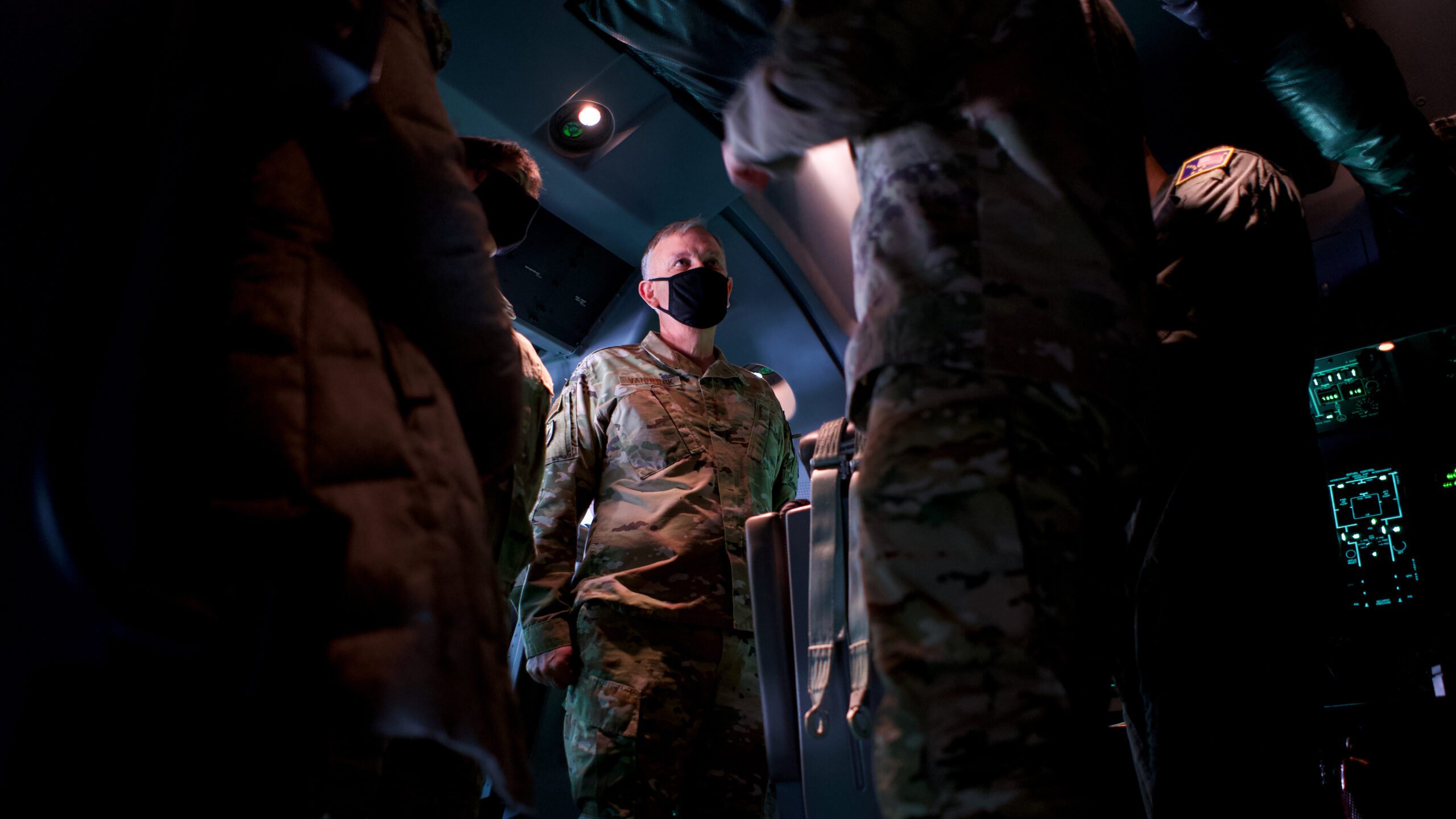
Gen. Glen D. VanHerck (center), commander of North American Aerospace Defense Command and U.S. Northern Command, tours a 211th Rescue Squadron HC-130J Combat King II Oct. 28, 2020, during a visit to Joint Base Elmendorf-Richardson, Alaska. (U.S. Air National Guard photo by David Bedard/Released)
WASHINGTON — Chinese high-altitude balloons have previously floated near or across parts of the US without being detected because US Northern Command does not have the correct mix of sensor capabilities, according to the commanding general responsible for homeland defense.
Last week’s balloon mania reached an apex Saturday when an F-22 Raptor fired an AIM-9X Sidewinder missile at what the Pentagon said was a Chinese “surveillance balloon” that had floated across the American heartland for days. After the strike, the craft’s payload crashed into the Atlantic Ocean off the southeast US coast. White House and Pentagon officials said today it will take time to sort through the debris and figure out the payload’s capabilities, but the incident already has highlighted an apparent blind spot in America’s air defenses.
“It’s my responsibility to detect threats to North America. I will tell you that we did not detect those [previous] threats, and that’s a domain awareness gap that we have to figure out,” Gen. Glen VanHerck, the commander of USNORTHCOM and the North American Aerospace Defense Command (NORAD), told reporters today.
The four-star general, a staunch proponent of beefing up US sensing capabilities to include over-the-horizon radars, did not disclose the number of past detection failures or where the balloons had flown. John Kirby, the White House National Security Council’s coordinator for strategic communications, said today that the Biden administration discovered three incidents during the Trump administration when “surveillance balloons, by the [Chinese government] transited US airspace” for “brief periods of time.” On Saturday a senior defense official told reporters there had been another incident earlier in Biden’s presidency. None were for the duration of last week’s saga.
VanHerk said it was the intelligence community that later discovered evidence of the other flights.
“The intel community, after the fact … assessed those threats through additional means of collection and made us aware of those balloons that were previously approaching North America or transiting North America,” VanHerck said. He noted that USNORTHCOM does not have the authority to collect intelligence inside US borders but was able to track the movement of last week’s balloon because it was granted “specific authorities.”
Despite the Pentagon’s disclosure of Trump-era balloons, some top Trump administration officials, including former Defense Secretary Mark Esper, have said this is news to them. Kirby said the administration is preparing to brief “key officials” from the Trump administration about the balloon intelligence.
As the balloon political drama continues to play out in Washington between the two administrations and some members of Congress, Beijing is maintaining that the downed balloon was a civilian weather vessel — a story no US official appears to be buying — and said Washington overreacted.
“We solemnly protest this move by the US side and reserve the right to take necessary measures to deal with similar situations,” Senior Col. Tan Kefei, a spokesperson for China’s Ministry of National Defense, said in a statement released on Sunday.
VanHerk said the Pentagon is ready to “exploit” the balloon’s remnants once sailors on the USS Carter Hall finish collecting what they can from the 1,500 meters by 1,500 meters debris field. He also said the FBI was working with the military “as we collect this under counterintelligence authorities.”






















